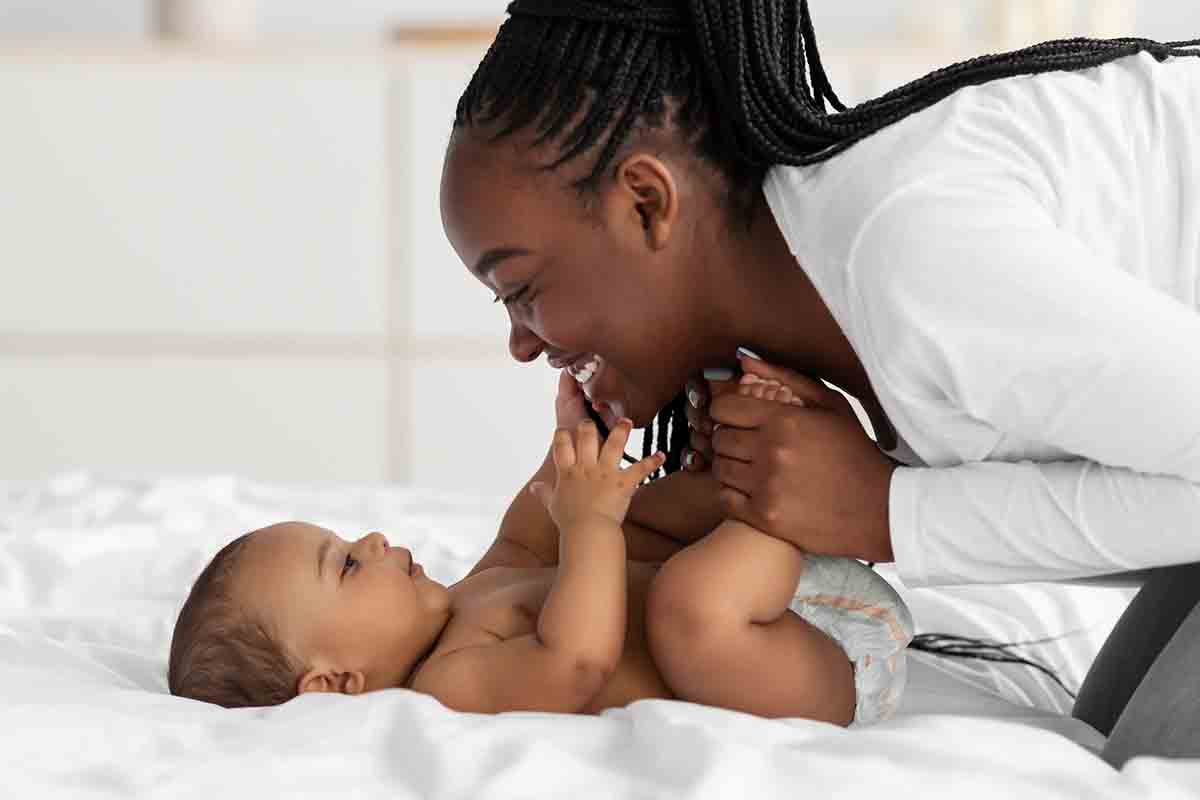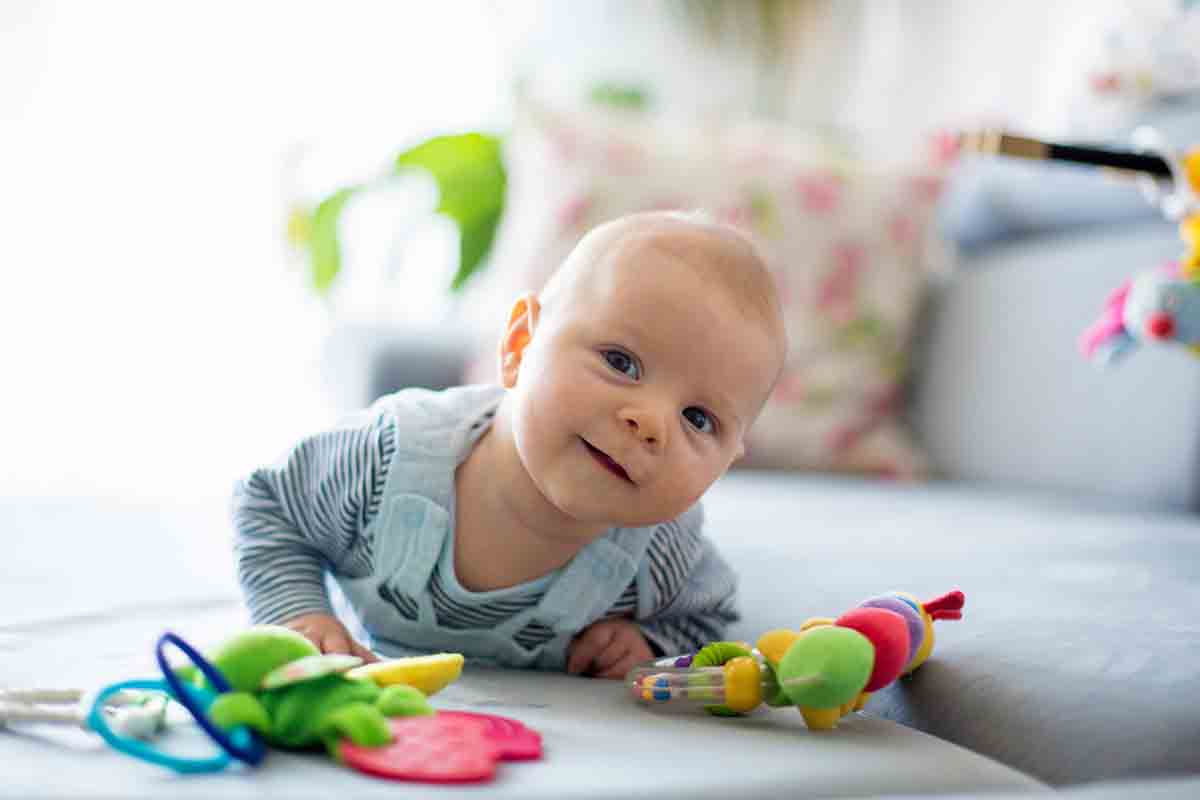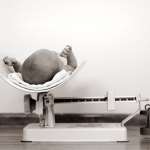When choosing toys for a child, it's important to consider not only their age, but also their stage of development. Different stages mean different skills, and that, in turn means different ways of interacting with, and enjoying a toy.
Whew! That sounds complicated! But you don't need a degree in child development to crack the code. You just need to understand the basics.
And that's why we're here.
Best Baby Toys 0-2 Months

During the first two months of life, a baby doesn't need or want toys. Most babies don't even discover their own hands until around two months of age.
But that doesn't mean a baby isn't interactive at this age.
How Much Will My Baby Weigh?
Can you predict your new arrival’s weight? There are a few clues that can help you guess. But there’s no way to fill in the weight on the birth announcement until the nurse places your bundle of joy onto the scale. The average baby is born weighing 7 pounds 7 ounces, but anywhere from 5 pounds 8 ounces to 8 pounds 13 ounces can be considered healthy. Read More
Those first two months are very, very, important for emotional development.
At this stage of development, babies spend a lot of time watching and listening to the people around them.
Babies will often give their first smile during these first crucial months, and will learn that this action creates a reaction from the people around them. They will learn a new way of communicating in addition to crying.
In fact, a smile can be the start of your baby's first conversation. That conversation can also include catching your eye and holding eye contact.
It might not sound like much, but when it comes to your baby's emotional development, it can be more important than you think.
Interaction is the best activity for your baby at this point.
The best things that you can do with your baby during the first two months are:
- Holding and cuddling
- Talking to your baby
- Smiling at your baby
- Making eye contact
- Singing to them
- Reading out loud
- Playing 'Peek a Boo'
No toy can replace that.
Best Baby Toys for 2 to 3 Months of Age

Between two and three months of age, most babies discover their hands. Grasping, holding, and shaking things become great fun. This is the start of gross motor skills development.
This can also be a good time to introduce toys.
Toys for this age group help the baby to understand that their physical actions (moving their hands) have an effect on the environment (the toy makes noise).
Fine motor skills are still a ways away, but this is where it all starts.
The best toys for this age are lightweight, soft, and have no small, detachable parts.
Look for:
- Soft rubber squeak toys
- Lightweight rattles
- Rattling bracelets
- Plastic keys
This can also be a good time for a mobile above your baby's crib. You don't need to buy anything fancy -- or anything at all. You can hang objects of different textures and shapes above the crib, such as a soft toy or a rattle.
How to Tell if Your Baby Likes a Toy
Many parents will tell you their babies came into the world with a distinct personality. It's true. Babies and young children aren't a blank slate, like many people once believed.
They have preferences for certain objects and activities, and you can see it very early on, even in infancy.
Whenever you introduce a new toy or activity, carefully watch the way your baby responds to it. By tuning in to your baby's reactions, you'll develop a sense for the things that your baby, as an individual, enjoys.
At this age, if your baby likes a toy, they will focus on it and reach for it.
Best Baby Toys for 3 to 6 Months of Age

Three to six months of age is an age of exploration.
What does this mean?
Right now, their minds are hungry for sensory information, and they will delight in anything that teaches them about different shapes, textures, tastes, smells, sights, and sounds.
For a child of this age, exploration means putting objects to the test. Babies this age will bang things on the floor, against each other, and against their own bodies.
They will also put objects into their mouths, so keep this in mind when choosing your baby's playthings.
Real-life objects can be great for brain development, as well as the development of both gross motor skills and fine motor skills.
Some excellent, age-appropriate toys include:
- Wooden and plastic spoons
- Plastic measuring cups
- Plastic funnels
- Baking sheets
- Plastic bowls
- Spatulas
- Lightweight balls
- Rattles
- Paper (crumpled or flat)
- Stacking toys
- Cardboard boxes
- Soft toys
- Tummy mats with bright colors
Objects that tickle the senses -- safely -- can be great toys for this age.
Teething
Teething often begins around six months, but some babies start teething earlier. Even if your baby has yet to cut their first tooth, teething rings can be a fun, safe sensory toy.
How to Tell if Your Baby Likes a Toy
Are you giving your baby the right toys for them?
At this age, you should have a pretty good handle on some of your baby's likes and dislikes.
Some babies like surprises; other babies find surprises frightening. The same for loud noises.
At this age, your baby may have one or two favorite toys. However, they may also unexpectedly grow bored with a toy.
If your baby likes a toy, they will make it pretty clear. They'll reach for it. They may smile or laugh. They may not want to be separated from it.
If your baby turns its head away from a toy, however, or starts to fuss or cry, it may mean that they're done with that toy for now, or that they don't like it.
A Word of Caution
This is a time of rapid growth and exploration, and babies this age explore the world in every way that they can.
This means that you need to take extra care not to give them anything that could hurt them. This means:
- No sharp corners or edges
- Nothing that breaks, chips, or splinters easily
- Nothing toxic
- Nothing too heavy
Finally, make sure that what you offer your baby is too big (at least two inches in diameter) for your baby to swallow or choke on.
Best Baby Toys 6 Months to 1 Year Old

A lot happens in the last half of a baby's first year. Most babies have learned to crawl. Many pull themselves to a stand and hold on to furniture. Most will learn to walk.
At this age, babies also begin to experiment with problem solving and cause and effect.
What does that look like?
One example is when a baby throws a toy out of reach and cries. A parent retrieves the toy. Problem solved!
Testing your response is a favorite game for a baby between six and twelve months. They also like to imitate the people around them. And many have favorite and not-so-favorite people.
The best types of toys for this age continue the theme of action and result, and may also offer opportunities for problem solving. Some examples include:
- Pull toys
- Push toys
- Toys that imitate the actions of family life
- Activity tables
- Spinning tops
- Baby-safe musical instruments
- Shape sorters
- Jack-in-the-box type toys
- Stacking toys
Educational Toys
This can also be an excellent age to introduce educational toys, particularly board books (because they stand up well to chewing).
Between six and twelve months of age, many babies develop the ability to look at the correct picture when you name the object. They can also imitate gestures, like pointing.
This can be a fine age to teach the names of objects, even before your baby learns to speak.
Be Safe
At this age, your baby will touch, throw, and bash their toys. They will smell them. They will hit them against their own bodies. Everything will go into your baby's mouth.
Toys for children this age should be free of sharp edges. They shouldn't break or splinter. They shouldn't have small parts that break off, and the toys themselves should be large enough to not cause a choking hazard.
Also, be aware that babies of this age are increasingly mobile. They will reach higher and higher to access the things that interest them.
So stay aware.
For Young Children of Any Age

Whatever your baby's age, when it comes to toys, there are a few important things to keep in mind.
One at a Time
Introduce new toys one at a time. Your baby can only focus attention on one thing at a time, anyway.
Offering too many toys at once can overwhelm your baby.
Attention Span
Does your baby get bored with a toy easily? It's perfectly natural. In fact, before their first year, most babies have an attention span of minutes.
This is why baby-safe household objects make some of the best types of toys for the under-ones. They're durable, fun, and if your child becomes bored with them, you won't have invested a lot of money in the object.
Individuals are Different
Remember that every baby has a different personality, development schedule, and attention span.
Different babies have different ideas of fun. And different babies like different toys.
Rather than pushing your child to play with the toy that you think is most appropriate for them, let your child lead the way.
Screen Time
We've all seen it: babies staring at screens as soon as they're old enough to focus.
The American Academy of Pediatrics recommends ditching the screens for preschoolers and young children under two years of age and finding other things for your kids to do instead.
Too Far Too Fast
Some parents may be tempted to push their children to hit those milestones on schedule, or even early. And there are plenty of products on the market that claim to accelerate your baby's development.
Remember that every baby has its own schedule, and that's perfectly normal.
If you're concerned about your child's progress, it's important to discuss it with your pediatrician. But if your child simply doesn't prefer the types of toys you think they should, when they should, don't be alarmed.
Babies learn through play and exploration. Let them make up the rules. This not only will help with their development, but will let your child know from the beginning that their interests are important, and important to you.
Final Thoughts
There's a lot going on during a baby's first year -- and a lot for parents to learn, too.
But remember: you are your child's first and most important teacher.
Children under two months of age don't need toys, and don't have the coordination to play with them. What they need, and want, is interaction with their parents.
For babies between two and six months, toys that they can grasp will help them to develop gross motor skills.
And babies between six and twelve months need durable, safe toys that they can explore with all of their senses.



